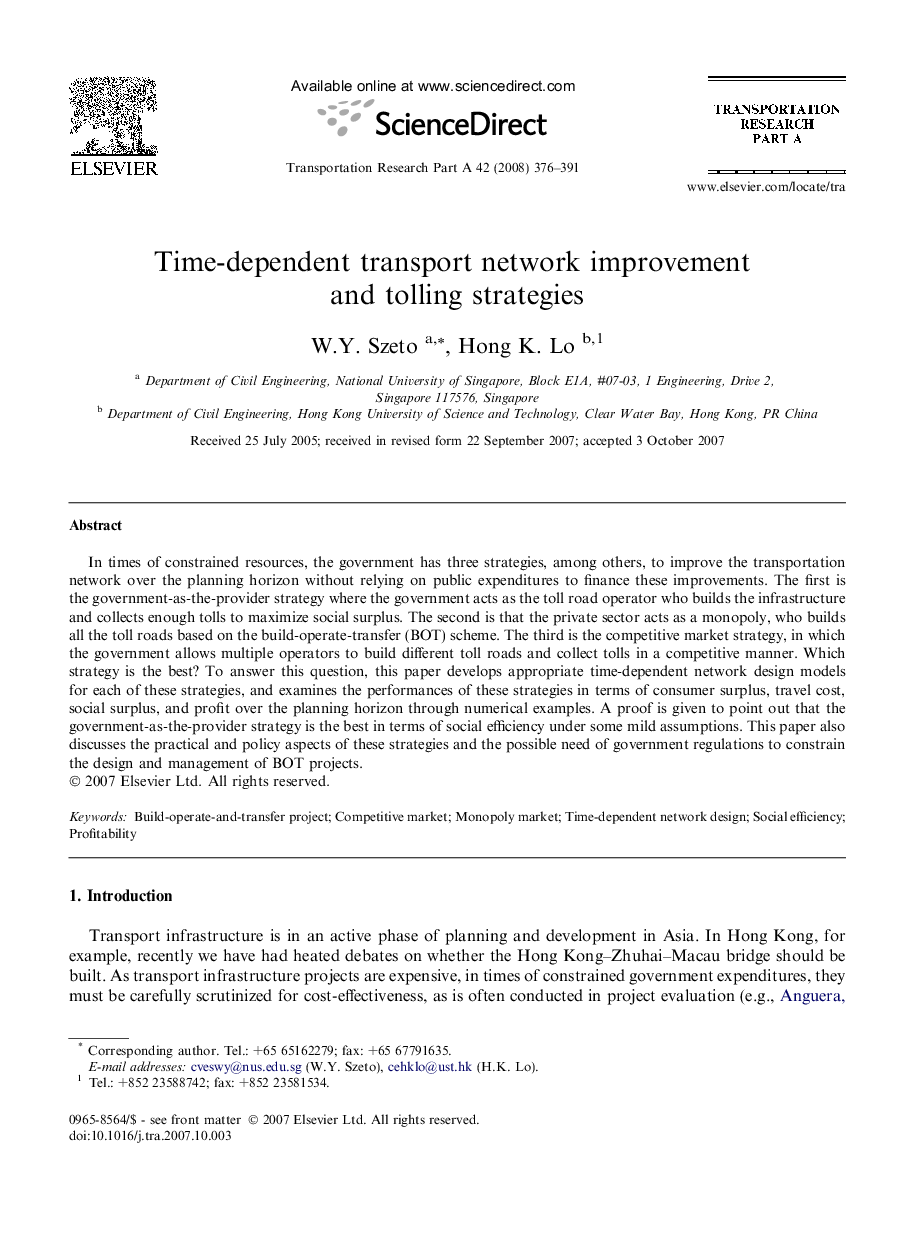| Article ID | Journal | Published Year | Pages | File Type |
|---|---|---|---|---|
| 311415 | Transportation Research Part A: Policy and Practice | 2008 | 16 Pages |
In times of constrained resources, the government has three strategies, among others, to improve the transportation network over the planning horizon without relying on public expenditures to finance these improvements. The first is the government-as-the-provider strategy where the government acts as the toll road operator who builds the infrastructure and collects enough tolls to maximize social surplus. The second is that the private sector acts as a monopoly, who builds all the toll roads based on the build-operate-transfer (BOT) scheme. The third is the competitive market strategy, in which the government allows multiple operators to build different toll roads and collect tolls in a competitive manner. Which strategy is the best? To answer this question, this paper develops appropriate time-dependent network design models for each of these strategies, and examines the performances of these strategies in terms of consumer surplus, travel cost, social surplus, and profit over the planning horizon through numerical examples. A proof is given to point out that the government-as-the-provider strategy is the best in terms of social efficiency under some mild assumptions. This paper also discusses the practical and policy aspects of these strategies and the possible need of government regulations to constrain the design and management of BOT projects.
